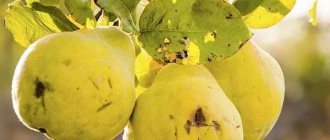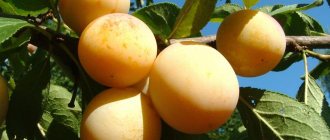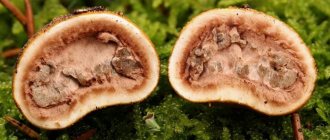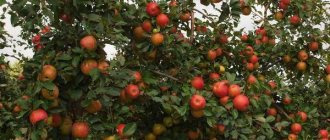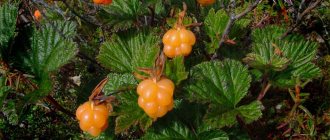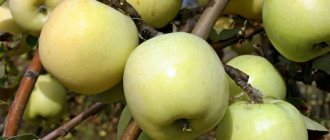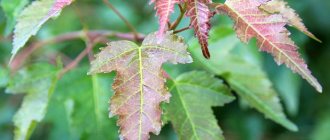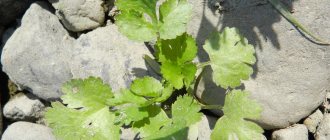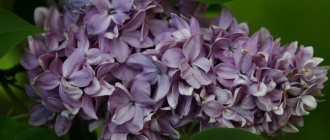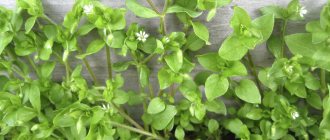What is sphagnum moss
Sphagnum, a genus of sphagnum, peat or white mosses, including 320 species, 42 of which are distributed in Russia. Most of them are marsh mosses, growing in dense dense clusters, in the form of a thick carpet or large pillows. They also grow in humid forests, but much less frequently. They can most often be found in the forest and tundra zones of the Northern Hemisphere, the high mountain zones of the Southern Hemisphere, and less often on the plains of the temperate zone.
Sphagnum moss is typical of peat bogs. Here it not only predominates among all other plants, but also determines their living conditions. Therefore, such bogs are also called sphagnum bogs.
Botanical description
If we describe the appearance of sphagnum mosses, they are soft, loose, leafy mosses, depending on the type, with a color ranging from greenish to red. They are distinguished by erect, branched, soft stems. The branches on the stems are arranged in a bunch-like manner. The branch and stem leaves are single-layered, reed-shaped, and consist of alternating aquiferous and chlorophyll-bearing cells. The presence of shoots is multiple. Does peat moss have roots? Despite the fact that this plant is higher and not lower, it does not have flowers, roots or a conducting system.
If you look at a sphagnum pre-growth under a microscope, you can see that its cells are of two types. The upper part is green; they participate in photosynthesis. The lower part is whitish, it is they that accumulate and retain water and give it another name - white moss.
Reproduction
All species are spore perennials having two generations. The life cycle of sphagnum moss is dominated by the haploid gametophyte. Favorable conditions for fertilization are only aqueous or highly humidified environments. Sporulation occurs in sporophytes, consisting only of a stalk and a spore capsule, of which there can be from 20 to 200 thousand in a sporophyte (sporogon), and up to 15 million in one square meter of a swamp. Moreover, in sphagnum, monoecious and dioecious (female and male) gametangia are located on different shoots. In July, when the weather is dry and warm, the capsule seems to explode, and the spores are carried over long distances by wind or streams of water.
Speaking about how sphagnum reproduces, we cannot mention the second mechanism after sporulation - vegetative, asexual. Its vegetative propagation occurs in sections of the stem or branches and is effective over short distances.
Nutrition
This plant is an autotroph, not a heterotroph. Therefore, the answer to the question of how sphagnum peat moss feeds is clear - through photosynthesis, synthesizing organic substances from inorganic substances (water and carbon dioxide). It can absorb and retain carbon dioxide and moisture, the mass of which can exceed the mass of dry sphagnum by 12-25 times, depending on its biological type.
The world's sphagnum peat and moss reserves contain more carbon than any other plant species.
What is the life cycle of sphagnum moss?
Like vascular representatives of the flora, the species in question alternates between the asexual generation (sporophyte) and the sexual generation (gametophyte). The latter is represented by a photosynthetic green plant. Gametes are formed in the genital organs (gametangia). Male gametangia are called antheridia, female gametangia are called archegonia. From the zygote (fertilized egg) a sporophyte emerges - the spore generation. Mossy plants have virtually no chlorophyll. Sporophytes remain attached to the gametophyte, receiving nutrition from it. Each cell contains a diploid (double) chromosome set. The gametophyte has a haploid (single) chromosome structure (as in gametes). From two single sets, when the sperm and egg merge, one double set is formed. It is necessary for the development of the sporophyte. During spore formation, meiosis (reduction-type cell division) occurs. As a result, each spore again becomes haploid. Then it can germinate into the same single gametophyte. A thread-like branched structure is formed from the spore. It is called protonema. Buds begin to form on it. Gametophytes subsequently develop from them.
origin of name
Many people are interested in why peat moss got its name. As mentioned above, this type of moss is involved in the formation of peat bogs. Sphagnum grows and decomposes at the same time. While the sphagnum stem annually grows upward by 10-20 cm in the upper above-water part, its lower underwater part gradually dies off and is converted into sphagnum peat, growing at a rate of up to 1 cm per year.
Sphagnum raised bogs
Due to the constant accumulation of peat, the surface of the bog in the upper layers slowly rises. In this way, so-called raised bogs are formed. There are no bogs in them, and the water level is 10-20 cm below the peat surface. That is why sphagnum is called peat moss.
Spreading
Tundra and taiga species of the Northern Hemisphere, found sporadically to the south (indicated for the mountains of the Iberian Peninsula, the Caucasus, Central Asia, Japan and northern China). In more southern regions it is found sporadically both in oligotrophic areas and on hummocks of mineralotrophic swamps. It is found in all regions adjacent to the Tula region [1]. On the territory of the region it grows near the southern border of the range and was found in karst swamps in the Kireyevsky and Shchekinsky districts. Before drainage reclamation, it was indicated for the Lupishkinsky swamp in the Kimovsky district [2], where it has apparently disappeared by now.
The importance of sphagnum in nature and human life
Speaking about why sphagnum is needed in nature and about its significance in particular in human life, it should be remembered that this ancient plant has survived to the present day thanks to its unique qualities. And they are the ones who determine why it is needed on this planet.
The water in some sphagnum bogs is more acidic than lemon juice.
Among the properties that determine the value of sphagnum, the following stand out.
Hygroscopicity
In a dry air state, peat mosses are able to absorb an amount of moisture 20-25 times greater than their own weight. Even absorbent cotton has a 4 times lower absorption rate. It is interesting that this type of moss received the name “sphagnum” for its high hygroscopicity, since “sphagnos” translated from Greek means “sponge”.
Breathability
Sphagnum moss allows air to pass through well and, as a result, has low thermal conductivity, therefore, it perfectly maintains the optimal temperature (it does not overheat or overcool). This feature was noticed by ancient people and they began to use moss as blankets and diapers. Today, in its processed form, it is used as a thermal insulation material in construction.
Antibacterial
The ability of sphagnum to prevent decay processes is due to its high content of carbolic and sphagnum acids, which, being natural antibiotics, kill bacteria and are considered one of the most popular antiseptics in medicine. The healing properties of sphagnum do not go unnoticed today. The upper parts of moss are used in medicine and veterinary medicine as raw materials for the production of antibiotics and dressings. The bactericidal qualities of white moss make it possible to use it for caring for pets. For example, sphagnum bedding for snails in an aquarium allows you to keep it clean for a long time without additional treatment. In addition, sphagnum has the ability to acidify water, creating conditions in the aquarium that are necessary for the life of some species of fish.
Durability.
The resistance to decomposition of this moss is very high; when dried, it is preserved for an almost unlimited time. And one of the reasons slowing down the stage of decomposition of this amazing plant is its low nutrient content.
Sphagnum moss. Application
“Sponge” has a number of useful properties, thanks to which it is used in various fields. In medicine, use began in the 11th century. And by the 19th, sphagnum moss began to be sent to the provinces for use as a dressing material. During the war, it was an indispensable remedy, having high hygroscopicity and the ability to quickly and easily absorb pus, blood and other liquids. Some companies today produce sphagnum-gauze swabs, which are additionally impregnated with a solution of boric acid. Moss contains sphagnol, a phenol-like compound. This substance has a bactericidal, antifungal and disinfectant effect. Humic acids, also present in the plant, exhibit antibiotic properties. The use of sphagnum insoles helps to quickly get rid of foot fungus. For infectious skin lesions, psoriasis and other pathologies, baths with moss infusion are recommended. To prepare, cut a small amount of “sponge” and fill it with water (70-80 degrees). Sphagnum is used as a filling for diapers and mattresses. It is recommended as a padding diaper for the elderly and seriously ill.
Benefits and harms
It is impossible to say unequivocally whether sphagnum is useful or harmful. The mechanisms for maintaining ecological balance in nature are very subtle and depend on many factors.
In many European cities, containers with moss are hung on bridges. Their purpose is to monitor air pollution.
Due to the growth of aquatic plants, including sphagnum moss, forests and water bodies become swamped. In a swamp, it plays an important role in soil formation and regulation of water exchange and improves the ecological situation by absorbing harmful substances, including radioactive ones. In addition, sphagnum releases hydrogen ions into the water, increasing its acidity.
In the forest, sphagnum often grows together with other types of mosses, usually with cuckoo flax. Under favorable conditions, it eventually forms a wet turf, under which the ground becomes waterlogged. On such soil, trees and shrubs grow poorly, the forest degenerates and gradually becomes swampy. But in the absence of mosses, the soil, on the contrary, dries out and is subject to erosion by water flows, which have nowhere to be absorbed.
Sphagnum in floriculture in the garden and at home
In addition to breathability, antibacteriality and the ability to accumulate and gradually release moisture, sphagnum acidifies the soil, preventing putrefactive bacteria in it from developing. Thanks to these properties, it is widely used in floriculture and horticulture.
Currently, the main consumer of sphagnum in the world is plant growing and floriculture, primarily in the USA, EU and Japan. Large quantities of dry sphagnum moss are imported by these countries for orchid growing, potting mixes, floristry and a wide range of moss poles and hanging baskets.
Plant growers use sphagnum moss as:
- additives to the main substrate;
- material for rooting cuttings and leaves;
- material for seed germination;
- landscape covering.
Dried moss has also been used. In summer cottages, they cover plants that do not tolerate frost well for the winter. Since not every garden flower needs acidic soil, the moss is removed in the spring, leaving only in those places where it will really benefit. For example, in flowerbeds with tulips, asters, chrysanthemums or beds with vegetable crops that also need acidified soil, such as carrots, potatoes, radishes.
When it is not possible to purchase or grow sphagnum moss, you have to look for options to replace this unique natural substrate. It will not be possible to find a completely equivalent alternative, but you can try using vermiculite or agroperlite as an additive that increases the moisture capacity and air permeability of the soil.
Sphagnum moss is indispensable for those who are often on the move and have no one to entrust watering the flowers with. Moss will do the job perfectly, you just need to wet it and cover the plant. This way the soil will remain moist for a long time.
Special properties of sphagnum mosses
Sphagnum moss, a photo of which can be seen in this article, has a number of special properties due to the presence of special cells. This:
- Hygroscopicity exceeding all known limits in plants. If we compare the moisture absorption capacity of cotton wool and sphagnum moss, it will be 6 times greater in moss! In addition, it is noteworthy that the distribution of water inside the plant body occurs absolutely evenly. Therefore, until all the existing cells are filled, the moss will not give up excess moisture. This allows it to be used as an addition to the soil.
- Air permeability, which allows the soil with moss to be very light, loose and airy. This increased aeration has a positive effect on the growth and development of other plants in the ecosystem.
- Sphagnum acids, which are part of the plant, allow it to moderately acidify the soil with hydrogen cations.
- The rich material organic composition makes this plant special. Sphagnum has antibacterial and anti-inflammatory properties, as well as disinfectants.
What is the composition of these amazing mosses? The most important connections can be named:
- sphagnum acids;
- coumarins;
- sphagnol;
- terpenes;
- carbolic acid.
Thanks to this component composition, the plant itself is practically not exposed to diseases or pests.
The most famous varieties of peat moss
The family unites more than 300 species, similar in structural characteristics and ecology, 42 of them grow in Russia. For economic purposes, the following varieties are most often used:
- Baltic sphagnum (Sphagnum balticum) - grows in a continuous carpet on the surface of sphagnum bogs. The leaves are shaped like equilateral triangles. The color can range from pale yellow to greenish, with a loose and soft structure.
- Wulf's sphagnum (Sphagnum Wulfianum) - has a brittle stem and branches gathered at the top into a spherical head. Its turf is green, quite dry and hard. The stem leaves are small and triangular in shape. Branched - ovoid, about 1.5 mm in size.
Sphagnum Wulfianum
- Swamp sphagnum (Sphagnum palustre) is an inhabitant of pine and birch swampy forests and lowland swamps. Loose dioecious moss of yellowish, dark green or brown color. It has concave, ovoid leaves, about 1 mm long.
- Brown sphagnum (Sphagnum fuscum) is a low plant, about 7-8 cm. It is located in raised bogs in rusty-colored tufts, less often spread out as a carpet or large spots. The stem is thin, brown or brown in color, with oval-shaped leaves.
- Sphagnum capillifolium (Sphágnum capillifolium) is a perennial plant no more than 20 cm tall. The color of the plant is greenish white with red or yellow stem. The leaves are concave and ovoid at the top of the plant. Grows in wet meadows and low-lying swamps.
Hairy sphagnum (Sphagnum capillifolium)
- Sphagnum angustifolium - has a thin stem and small leaves. The turf is yellowish-green in color. The branch leaves are elongated, lanceolate, forming an elongated, narrowed apex. The stem leaves are triangular-linguate. It grows not only in open areas of swamps, but also in swampy forests and burnt areas.
- Protruding sphagnum (Sphagnum squarrosum) - differs from other species in its thicker stem. The leaves are elongated, tongue-shaped, and form a fringe at the top. Turf can be different shades of green. This species is easily recognized by its protruding stem leaves. Found in mixed and coniferous damp forests.
- Smooth sphagnum (Sphagnum teres) is a species that is demanding of mineral nutrition. Grows in low-lying open swamps. It has smooth yellowish or brown, occasionally green, tufted and ovate leaves, sharply turning into the apex.
- Sphagnum magellanicum - has a branched stem and ovoid leaves that creep over each other. The turf is yellow, often red. It grows on hummocks of raised bogs, not far from pine trees.
Sphagnum magellanicum
- Lindbergh sphagnum (Sphagnum lindbergii) - rusty-brown tufts of this species can be found in swamps and the outskirts of raised bogs. The stem leaves are rectangular with a fringed tip. Branch leaves are shiny, lanceolate-shaped. Listed in the Red Book.
- Sphagnum acutifolium is widely distributed in tundras, mountains, swampy forests, as well as lowland and high bogs. The turf is red or brown interspersed with green. The stem leaves are triangular in shape, the branch leaves are ovate with an adjacent apex.
- Soft sphagnum (Sphagnum molle) is a rare species, listed in the Red Book. Forms tufts of a yellowish-green hue. Branch leaves are concave, ovate with a groove on the cut. Stem leaves are in the form of a diamond or triangle. Soft sphagnum prefers a damp, mild climate and is found in high and lowland bogs.
- Girgensohn's sphagnum (Sphagnum girgensohnii) - lives in tundras and mountains, damp forests and transitional swamps. The turf is loose, from yellowish-green to brown. Hard when dry. Branch leaves are ovate, up to 1.5 mm long, overlapping each other. The stems are tongue-shaped, forming a spherical apex.
Girgensohn's sphagnum (Sphagnum girgensohnii)
How to collect and save
Sphagnum can be harvested from April to October, of course, if weather conditions permit. As a rule, the weather most suitable for “going to the swamp”, warm and dry, is in August-September. When going for sphagnum, you need to dress appropriately (rubber boots, a hat, thick trousers, a top with long sleeves, work or medical gloves), take a sharp knife and plastic bags with you.
Moss collection is carried out in two ways:
- the plant is completely removed, the mass is gained faster, but a lot of time will be spent on subsequent cleaning;
- The upper part is cut off with a sharp knife, the mass is collected more slowly, but subsequent cleaning is not necessary.
If the moss is to be used live (not dried), it is briefly laid out in an even thin layer in the shade so that it dries slightly and remains moist, but not wet. To preserve all the beneficial properties, the plant is stored in plastic bags in the cold; in winter, you can even store it on the street or on the balcony. When needed, it will come to life in a warm room.
How to grow sphagnum
Sphagnum, like almost any plant, can be grown independently and then used not only as a useful additive to the soil, but also as a decorative unit. The dense soft coating of a cheerful emerald color significantly decorates and cultivates the landscape of the garden plot.
To plant, you need to prepare a mixture of crushed moss and an ingredient that will serve as a nutrient medium for it. Any fermented milk product, which must be natural, is suitable for this purpose, for example, yogurt or kefir. For two glasses of liquid you need to take one glass of crushed moss. As a result, the consistency of the mixture should be the same as that of low-fat sour cream.
How to grow moss at home
Take a natural bristle brush, dip it in the mixture and apply it in a thin layer, avoiding smudges, on the place where you plan to grow moss (wall, stone, brickwork, etc.). It is desirable that the surface be grainy and rough.
The planting should be regularly sprayed with water at room temperature, every day for the first 3 weeks, then the frequency of spraying can be reduced to once every 3 days.
Home grown sphagnum moss
In the first weeks, young moss will resemble a thin film of greenish mold. It must be treated with care, protecting it from abrasion. Whether the sphagnum has taken root will finally become clear in about 6 weeks. Areas where the film will not grow and develop are renewed by applying a freshly prepared mixture to them.
How to grow moss in the garden
Planting material for growing in open ground is prepared in exactly the same way as described above. The optimal time for sowing is autumn. Planting and care are carried out observing the following rules:
- The planting area should be shaded. In places exposed to wind and sun, moss quickly dries out and does not take root.
- The surface relief can be any. Before planting, it must be cleared of debris, leaves, branches, and stones.
- Moss takes root not only on natural surfaces, but also on artificial ones, for example, paving slabs or decorative stones. The main condition is the roughness of the surface, otherwise it will not adhere to the nutrient mixture.
Another way to grow sphagnum moss in your summer cottage is to cut out a piece of turf with moss and transfer it to garden soil in a shaded and moist place or to a tray with warm peat and water it daily. Sphagnum moss is not poisonous, so you can handle it with your bare hands.
Description of the plant
This type of moss belongs to the sphagnum family, genus Sphagnum.
There are about 120 species of sphagnum. The most common are marsh, brown, protruding, papillous, Magellan. The appearance of sphagnum is quite interesting. Plants are composed of several layers of cells. It is interesting that the stems are dissected along their entire length and curl slightly at the top. The leaves have a ligulate type and a non-sessile arrangement. Many branches extend from the main stem. The lower part of the branches has a light shade, and closer to the top the stem acquires a juicy bright green color. This is explained by the fact that in the lower part of the plant there is no chlorophyll pigment in the cells, because this part loses its vitality. The outside of the plant is covered with a thin crust, which consists of several layers of cells.
The plant has no roots and they are not attached to the soil. They can move freely and grow rapidly.
Appearance
Now it’s worth telling what sphagnum moss looks like - the photos still give only a fairly superficial idea.
He cannot boast of a particularly outstanding appearance. It has a very thin green stem that starts at the root and stretches upward. It is distinguished by its emerald green color. The upper part is covered with small leaves arranged in a spiral. By the way, for the sake of clarity, it should be noted that this moss actually has no roots. And that brown part, which not very experienced botanists perceive as a root, is an old, dead part of the plant.
Sphagnum, despite its small size, is a perennial plant. As cold weather approaches, it freezes to continue life in the spring. It only grows upward, not sideways. The lower part dies over time, rots, becoming peat.
The stems grow very densely, most often in damp places. Because of this, only the upper part receives the light necessary for the development of green plants. And in the lower, shaded area, chlorophyll is destroyed over time, and it becomes white. Over time it rots, turning brown.
It reproduces, like most mosses, with the help of spores. They contain germ cells grown on the stem. After ripening, the sac bursts, and thanks to water and wind, light spores are carried over a considerable distance.
Features of the plant and its life cycle
This is a perennial spore plant that does not have a root system. In the process of development and growth, they form straight shoots without branching, which are collected into dense turf, reminiscent of “pillows”.
Instead of a stem, phyllidia and caulidia are formed. The gaps that form between the elements have the ability to absorb moisture, which ensures the life cycle.
In addition to the phyllidia, which consist of only one cell layer, there is a third element. These are rhizoids, which are formally the root part. The thinnest threads of rhizoids branch very strongly and absorb moisture from the soil layer. One of their features is that over time the absorption process stops and the rhizoids perform only the function of support.
The life cycle is based on the alternation of sexual and asexual generations . Gametophyte is a sexual generation that has male and female gametes that give rise to asexual sporophytes. A gametophyte is a photosynthetic green plant.
A sporophyte is a spore generation that feeds on the gametophyte. Each sporophyte cell has a double set of chromosomes, whereas gametes have only one. The development of the sporophyte occurs due to cell division during the process of meiosis. The result of the process is a spore that has sex, becoming a single gametophyte. a constant, endless, life cycle occurs
Life cycle of sphagnum.
Properties of sphagnum
This unusual plant has the following properties:
- Good breathability. When this plant is added to the soil, it becomes loose, light and additionally enriched with oxygen. Such soil will create favorable conditions for growing other plants.
- Excellent hygroscopicity. The ability to absorb moisture is 6 times higher than the absorption of moisture by cotton wool. Moreover, the moisture is distributed evenly in the plant.
- Sphagnum is not susceptible to disease, so its use cannot infect other plants. The acid contained in the stems prevents insects and pests from feeding on the juices of the stems.
- Has antibacterial properties.
- It has an acidic reaction and gradually acidifies the soil, enriching it with hydrogen cations. Sphagnum moss can be added to the soil for planting plants that require acidic soil.
Application area
This plant has extensive uses. Man has learned to use bog sphagnum in various areas. But before use it must be properly prepared.
What is moss used for:
- Floristics. Dried sphagnum has a beautiful appearance, so florists use it in various compositions, for example, to fill the volume in transparent vases or hanging flowerpots.
- In construction. People use white sphang in the construction of wooden houses; this plant acts as a heat-insulating material. It is used to insulate log houses.
- Medicine. Used as a disinfectant and antibacterial agent. It is used in baths and lotions for bacterial skin diseases.
- Transportation of fruits. Dry sfang is perfect for long-term transportation of fruits and vegetables. Each fruit must be wrapped in a dry substrate and placed in boxes. The fruits will not come into contact with each other, but will be ventilated on all sides, thereby increasing the shelf life.
- Floriculture. This plant is used to increase the nutritional value and lightness of flower soil. Sphagnum moss is used for indoor plants and greenhouses; for example, to grow orchids, dry peat moss is added to the substrate. You can root cuttings of indoor flowers in this nutrient mixture, especially if the cuttings are not entirely suitable for propagation.
- Detergents and disinfectants. It is added to the composition of such products.
This is interesting: All about perennial garden milkweed: how to grow, propagate, planting and care in the garden
Sphagnum moss in indoor floriculture
Every indoor plant lover has used sphagnum moss at least once or heard about it. And if you grow orchids at home, most likely you have several bags of this valuable natural material in stock. There are many options for using moss in indoor floriculture.
- Filler for composite earth mixtures . Thanks to the addition of sphagnum, the hygroscopicity, breathability and acidity of the soil increases. The soil retains moisture without being waterlogged. The root system receives as much fluid as it needs, while maintaining the ability to breathe.
- Surface cover of soil in pots . This is especially true for moisture-loving plants. Moss maintains optimal soil water balance for a long time. Sphagnum on the surface of pots is one of the secrets of those who want to provide sufficient moisture to plants during long trips from home.
- Soil sterilization . Thanks to its bactericidal and antiseptic properties, this moss protects plants from pathogenic microflora. It can be added to sterilize the earthen mixture.
- Drainage . Sphagnum moss is placed at the bottom of the pot to create a drainage layer. It absorbs excess moisture after watering, and, if necessary, releases moisture back to the soil. Compared to expanded clay, moss takes up less volume and saves pot space.
- Making blocks for epiphytes . Using sphagnum moss you can create hanging baskets, supports and blocks for aerial rooted plants.
- Rooting cuttings . Cuttings (for example, violet leaves) can be rooted in moss. Or you can tie plants with thick stems without lower leaves with a film of wet sphagnum (a cut is first made on the stem). This method is also used for cutting roses.
- Air humidification . If the plant loves moist air, place the pot in a wider pot or bowl, on the bottom of which lay expanded clay (bottom layer) and sphagnum (top layer). It is desirable that the moss be alive. By spraying it in the morning and evening, you will significantly increase the air humidity.
- Filtration of hard water . By watering indoor plants through the top layer of moss, you remove salts from hard tap water. At the same time, do not forget to change the natural filter from time to time.
- Disguising bare stems . The stems of some plants become elongated and unattractively exposed at the bottom. Wrap them in sphagnum moss, securing the moss with wire. This will make the plant look better. This wrap is especially useful for flowers with air horses.
It is worth buying sphagnum moss if you grow the following indoor plants: azalea, anthurium, asparagus, begonia, dracaena, dieffenbachia, monstera, orchids, crassula.
Sphagnum moss for the garden
For gardening and vegetable gardens, sphagnum moss is used less often than for indoor floriculture. One of the reasons is that not everyone knows what benefits can be derived from this natural material.
- Covering material . With the help of sphagnum you can protect tender plants from frost, because... it retains heat perfectly. It is also used to wrap the trunks of trees susceptible to cold.
- Fertilizer . Sphagnum itself contains virtually no nutrients, but when it dies it forms peat.
Use sphagnum to enrich the soil with caution. Sphagnum peat increases the acidity of the soil, and this is not suitable for all crops.
- Decorative solution . Use moss to decorate alpine slides or ordinary flower beds. It is both beautiful and original.
- Mulch . Sphagnum is suitable for mulching. But keep in mind that under a layer of moss the ground will be several degrees colder. At the same time, such mulch retains the warmth of the earth in cold weather and protects against excessive heat in hot weather.
Do not use sphagnum moss to mulch beds with small-fruited or garden strawberries (strawberries). These crops will rot under a layer of moss. But for peppers, radishes, raspberries and potatoes, this mulch is ideal.
- Protection against rot during crop storage . Layer roots and bulbs in layers of sphagnum moss for long-term storage. This will protect them from mold and rot. In addition, the loose structure of moss promotes air circulation.
- Germination of seeds . The nutritious, moist environment that can be created with sphagnum moss is optimal for germinating seeds of any crop.
Advice from experienced flower growers
Sphagnum moss for indoor plants can be purchased at a specialized flower growing store. Today, many agricultural firms are engaged in growing this crop.
Orchids in sphagnum
Sphagnum moss for orchids is an ideal addition to the substrate. It not only allows their roots to breathe, but also prevents alkalization of the top layer of soil.
Some gardeners use sphagnum moss as mulch. It is worth considering that, unlike traditional shelters, such a layer will acidify the soil, so it is not suitable for all plants. For example, for winter garlic, sphagnum is what you need! Hydrangeas and blueberries will also appreciate moss. Sphagnum is also suitable for mulching beds with strawberries - the berries are always clean, gray rot, if present, is minimal.
For violets - propagation of chimeras and rejuvenation of the rosette, but especially for the rooting of their leaves, sphagnum is an ideal substrate. In it you can germinate even the healthy remnants of a damaged leaf and grow a new flower from it.
At the dacha, you can use it to diversify landscape compositions, for example an alpine slide. And recently it has become fashionable to use compositions that contain moss in residential interiors, where they seriously compete with the usual bouquets.
The healing properties of Icelandic Cetraria moss
Icelandic moss, or cetraria, has long been used in folk medicine. Icelandic moss is believed to rejuvenate the body. It contains a huge amount of microelements, phosphorus, calcium, vitamin C, B vitamins, proteins, polysaccharides, a lot of soluble starch, as well as mineral salts, sugar, and acids that are similar in nature to tannins. Icelandic moss activates the human immune system much more strongly than other plant immunostimulants. This medicinal moss prevents the occurrence of diseases - from simple ailments to serious infections (for example, cetraria fights tuberculosis bacteria). A decoction of Icelandic moss forms a gelatinous mass that is easily digestible by the human body, containing up to 70% carbohydrates. This decoction regulates the activity of the digestive tract, restores strength after a serious illness, and has enveloping and wound-healing properties. It is used internally for pulmonary tuberculosis, whooping cough, bronchial asthma, as well as for chronic constipation and lack of appetite. Cetraria mucus is also used to reduce the effect of certain drugs that irritate the intestinal mucosa. Externally, a decoction of Icelandic moss is used to wash purulent wounds, ulcers, and as a lotion for boils and burns. Thanks to its powerful immunostimulating properties, a decoction of Icelandic moss is considered a real elixir of youth. It is still used by healers, using ancient recipes.
